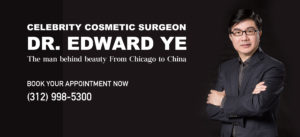What was old is new again. Microneedling is back– better than ever– and has become a popular anti-aging treatment at the Washington Institute of Dermatologic Laser Surgery. Our physicians are again leading the field in discovering new uses for this age-old treatment and developing novel techniques which have been shared with other physicians the world over.
What is Microneedling?
Microneedling involves the delivery of discrete wounds to the skin using a specialized (disposable and motorized) tip with thin needles. The tiny (virtually painless) pricks to the skin’s dermal and epidermal layers serve to stimulate the growth of new collagen and elastin. Recovery is fast- a matter of a few days during which time the treated skin appears pink in color while it is being repaired from within.
Skin Aging Process and Microneedling
As our skin ages, the production of the skin’s primary building block (collagen) slows down which causes the skin to look and feel thin. By stimulating the production of new skin cells, microneedling creates a more youthful and uniform skin appearance. Clinical results from microneedling are natural, subtle, and achieved over time as the body repairs itself. As a result, it can be used to minimize wrinkles and enlarged pores as well as to improve the appearance of scars in all skin types.
What is the Microneedling Process?
Microneedling treatments can be performed alone, but a series of 3 to 5 treatments at monthly time intervals are often recommended to maximize the clinical response. Each minimally invasive procedure is performed within a 30 minute office visit. Our physicians will determine the best treatment strategy for each individual based on the degree of skin damage and patient concerns.
What is the Recovery Like?
During the procedure, there may be light bleeding, but the skin appears only minimally pink (without bleeding) at the completion of the treatment. As such, microneedling is considered a “no downtime” treatment. The healing process is quick and painless. Mild skin redness and swelling (like a sunburn) is expected, but resolves quickly within a few days. Skin care products to enhance the results from the procedure are supplied in order to maximize the benefits from treatment. In most cases, makeup can be applied the following day. Favorable clinical responses are often observed within 3-4 weeks after treatment as the collagen begins to form.
What Conditions can be Treated with Microneedling?
Microneedling is recommended for treatment of enlarged pores, vertical lip lines, crow’s feet, stretch marks, and scars from a variety of causes such as acne, trauma, and surgery. The physicians at the Washington Institute of Dermatologic Laser Surgery often combine it with other treatments, including Fraxel Clear & Brilliant laser resurfacing and Platelet Rich Plasma (PRP), in order to increase the clinical benefits.
Acne (and Other) Scars
Microneedling is recommended for a variety of different scars- including those resulting from acne, trauma, or surgery. Clinical improvement ranging 50% to 80% has been seen after a series of 3 or more sessions at monthly intervals. Patients with longstanding scars which have often caused them to be self-conscious have regained much confidence after treatment. If you have suffered from scarring, the physicians at the Washington Institute of Dermatologic Laser Surgery are best equipped to create a customized treatment plan to help you regain confidence and restore the beauty of your skin.
What is the Recovery Like?
During the procedure, there may be light bleeding, but the skin appears only minimally pink (without bleeding) at the completion of the treatment. As such, microneedling is considered a “no downtime” treatment. The healing process is quick and painless. Mild skin redness and swelling (like a sunburn) is expected, but resolves quickly within a few days. Skin care products to enhance the results from the procedure are supplied in order to maximize the benefits from treatment. In most cases, makeup can be applied the following day. Favorable clinical responses are often observed within 3-4 weeks after treatment as the collagen begins to form.
What Conditions can be Treated with Microneedling?
Microneedling is recommended for treatment of enlarged pores, vertical lip lines, crow’s feet, stretch marks, and scars from a variety of causes such as acne, trauma, and surgery. The physicians at the Washington Institute of Dermatologic Laser Surgery often combine it with other treatments, including Fraxel Clear & Brilliant laser resurfacing and Platelet Rich Plasma (PRP), in order to increase the clinical benefits.
Acne (and Other) Scars
Microneedling is recommended for a variety of different scars- including those resulting from acne, trauma, or surgery. Clinical improvement ranging 50% to 80% has been seen after a series of 3 or more sessions at monthly intervals. Patients with longstanding scars which have often caused them to be self-conscious have regained much confidence after treatment. If you have suffered from scarring, the physicians at the Washington Institute of Dermatologic Laser Surgery are best equipped to create a customized treatment plan to help you regain confidence and restore the beauty of your skin.
Wrinkles (Vertical Lip Lines, Crow’s Feet)
Microneedling has proven helpful in smoothing the vertical wrinkles that are often seen around the mouth (perioral rhytides) as well as the wrinkles around the eyes (crow’s feet or periocular rhytides). These wrinkles are often caused by repetitive muscle movements in the areas as well as by destruction of collagen due to cumulative sun damage through the years. The thin skin around the eyes makes them more prone to wrinkling as well.
What are the Benefits of Microneedling?
- Dramatically increases the effectiveness and penetration of skin care products
- Stimulates circulation and collagen production
- Medical grade needles are safe and non-allergenic
- Cost effective compared to other skin resurfacing procedures
- Can be performed on all skin types- including dark skin
- All body areas (including fragile skin around the eyes, mouth and neck) can be safely treated.

